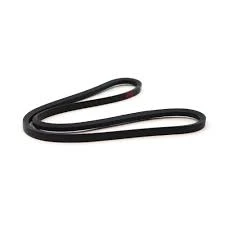- Arabic
- French
- Russian
- Spanish
- Portuguese
- Turkish
- Armenian
- English
- Albanian
- Amharic
- Azerbaijani
- Basque
- Belarusian
- Bengali
- Bosnian
- Bulgarian
- Catalan
- Cebuano
- Corsican
- Croatian
- Czech
- Danish
- Dutch
- Afrikaans
- Esperanto
- Estonian
- Finnish
- Frisian
- Galician
- Georgian
- German
- Greek
- Gujarati
- Haitian Creole
- hausa
- hawaiian
- Hebrew
- Hindi
- Miao
- Hungarian
- Icelandic
- igbo
- Indonesian
- irish
- Italian
- Japanese
- Javanese
- Kannada
- kazakh
- Khmer
- Rwandese
- Korean
- Kurdish
- Kyrgyz
- Lao
- Latin
- Latvian
- Lithuanian
- Luxembourgish
- Macedonian
- Malgashi
- Malay
- Malayalam
- Maltese
- Maori
- Marathi
- Mongolian
- Myanmar
- Nepali
- Norwegian
- Norwegian
- Occitan
- Pashto
- Persian
- Polish
- Punjabi
- Romanian
- Samoan
- Scottish Gaelic
- Serbian
- Sesotho
- Shona
- Sindhi
- Sinhala
- Slovak
- Slovenian
- Somali
- Sundanese
- Swahili
- Swedish
- Tagalog
- Tajik
- Tamil
- Tatar
- Telugu
- Thai
- Turkmen
- Ukrainian
- Urdu
- Uighur
- Uzbek
- Vietnamese
- Welsh
- Bantu
- Yiddish
- Yoruba
- Zulu
Sen . 19, 2024 06:16 Back to list
timing belt selection
Timing Belt Selection A Comprehensive Guide
When it comes to machinery and automotive applications, the timing belt plays a critical role in ensuring smooth and efficient operation. The proper selection of a timing belt is crucial, as it affects the performance, durability, and overall effectiveness of the system. In this article, we will explore the essential factors to consider when selecting a timing belt, along with various types and applications.
Understanding Timing Belts
Timing belts are used to synchronize the rotation of the crankshaft and camshaft in engines, ensuring that the engine's valves open and close at the correct times during the combustion cycle. Apart from automotive applications, timing belts are commonly found in industrial machinery where precise timing is required for smooth operation.
Key Factors in Timing Belt Selection
1. Material Timing belts are typically made from a combination of rubber and reinforcing materials, such as fiberglass or steel. The choice of material affects the belt's durability, temperature resistance, and flexibility. For high-temperature applications, consider belts made of heat-resistant materials, while belts with added steel reinforcement provide extra durability for heavy loads.
2. Tooth Profile The tooth design of a timing belt is vital for its performance. Common profiles include trapezoidal, round, and synchronous tooth shapes. The choice of tooth profile can influence the grip and wear of the belt, making it essential to select a profile compatible with the pulleys it will engage with.
timing belt selection

3. Belt Width and Length The width and length of a timing belt need to match the system's specifications. A wider belt generally provides greater load-carrying capacity, while the length must ensure proper fitment on the pulleys. Accurate measurements and calculations are necessary to avoid slippage or premature wear.
4. Load Requirements Consider the load that the timing belt will need to transport. This includes not just weight, but also the operating environment—whether it’s a high-speed application, or one requiring high torque. The belt's load rating should align with the expected usage to maintain optimal performance.
5. Operating Conditions Environmental factors such as temperature, humidity, and chemical exposure can significantly impact the performance of a timing belt. For example, belts in corrosive environments may require materials with higher chemical resistance. Similarly, belts exposed to extreme temperatures may require special formulations to cope with thermal expansion and contraction.
6. Installation and Maintenance The ease of installation and maintenance should not be overlooked. Some belts may require special tools or techniques for installation, while others may need frequent adjustments. Consider how accessible the belt will be for maintenance in case replacements or inspections are required.
Conclusion
Selecting the right timing belt is crucial for the reliability and efficiency of machinery and automotive systems. By carefully considering materials, tooth profiles, dimensions, load requirements, operating conditions, and maintenance, you can ensure optimal performance and longevity of the belt. Always consult the manufacturer's specifications and guidelines to make the most informed choice tailored to your specific application needs. With the right timing belt selection, you can enhance the functionality and durability of your equipment, minimizing downtime and increasing productivity.
-
Korean Auto Parts Timing Belt 24312-37500 For Hyundai/Kia
NewsMar.07,2025
-
7PK2300 90916-T2024 RIBBED BELT POLY V BELT PK BELT
NewsMar.07,2025
-
Chinese Auto Belt Factory 310-2M-22 For BMW/Mercedes-Benz
NewsMar.07,2025
-
Chinese Auto Belt Factory 310-2M-22 For BMW/Mercedes-Benz
NewsMar.07,2025
-
90916-02660 PK Belt 6PK1680 For Toyota
NewsMar.07,2025
-
drive belt serpentine belt
NewsMar.07,2025

